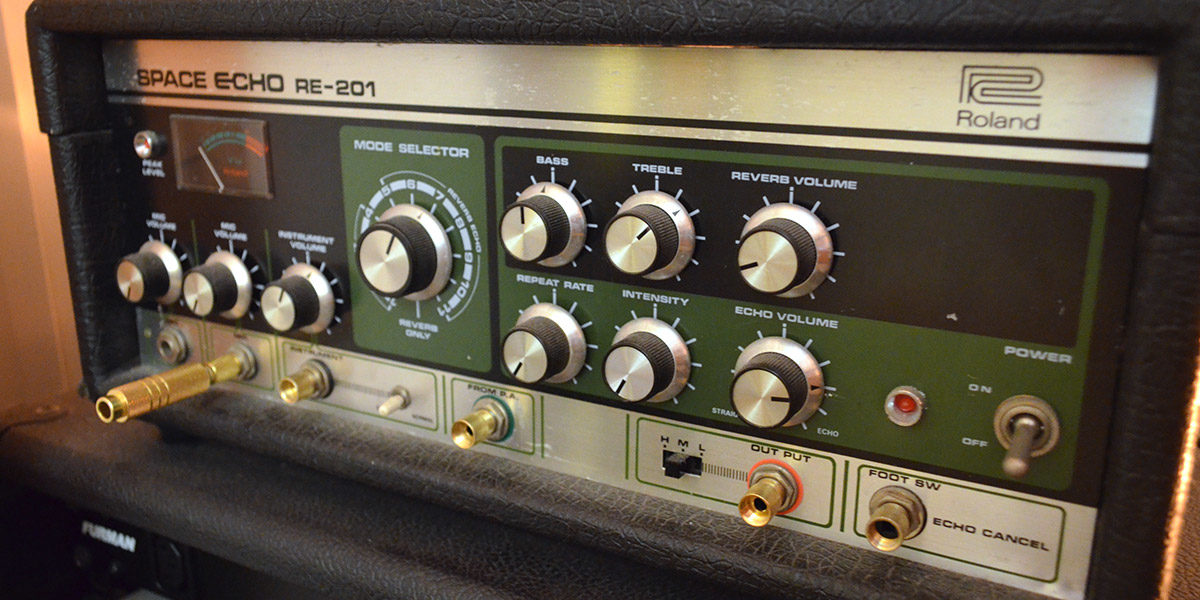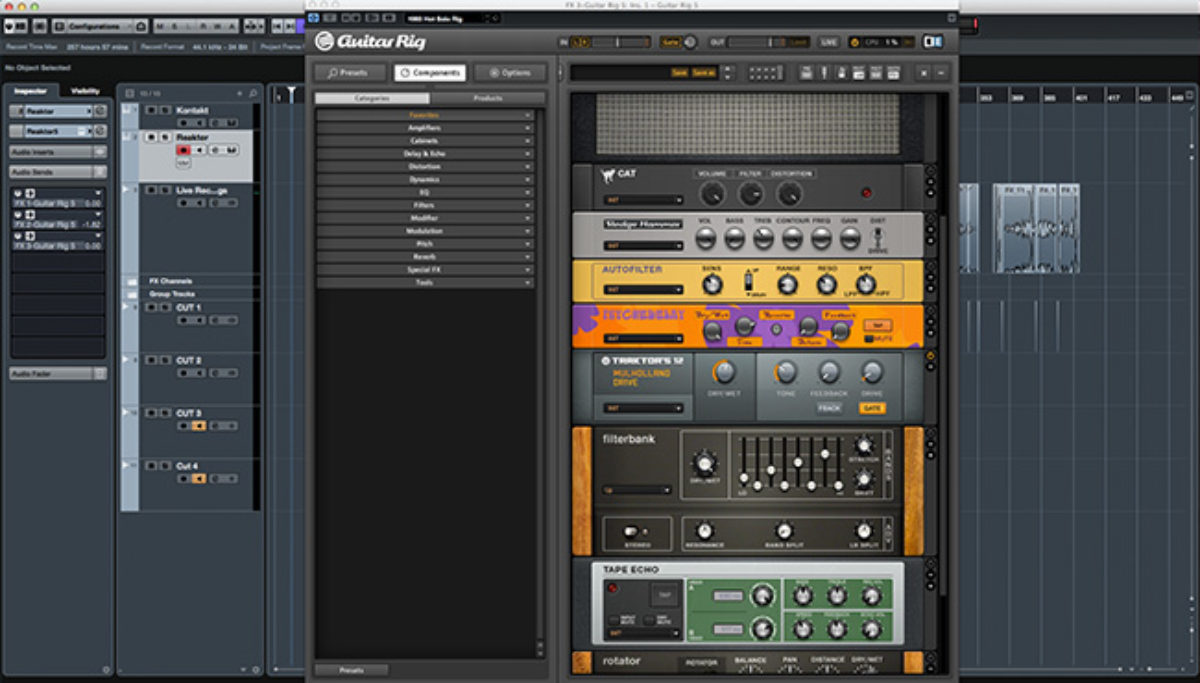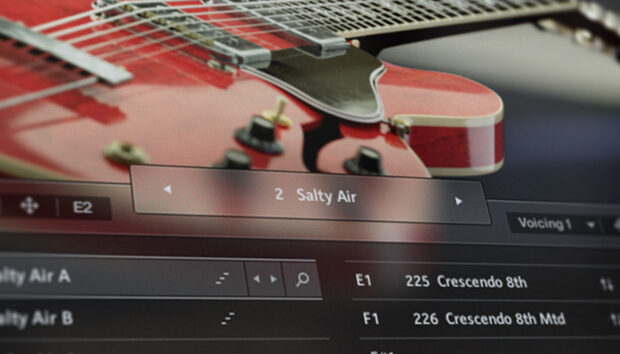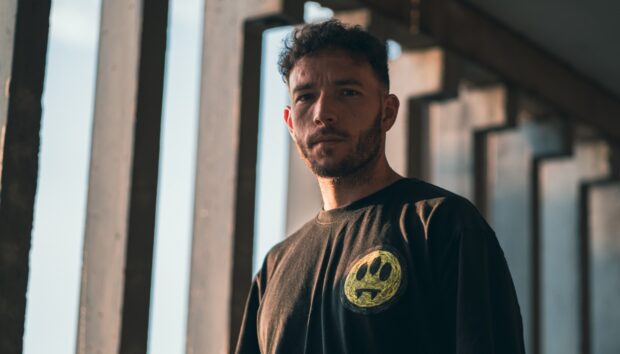
New Zealand drum and bass duo State of Mind talk about their use of GUITAR RIG and KONTAKT in the studio, sharing tips on how to use effects, create distortion, treat vocals and more.
In the last decade, Stu Maxwell and Patrick Hawkins have ensconced themselves into the Who’s Who of drum and bass with releases on CIA, Shogun, Viper, Eatbrain, and Subtitles as well as their own label, SOM Music, and more recently Black Sun Empire’s Blackout.
But the Auckland duo have also managed to prove that it’s not just who you know – in drum n bass, the striving for technical perfection is a never-ending pursuit, and Stu and Pat have gained more respect in the DnB community with each passing release. This year’s a big one for State of Mind, with their Land of The Blind project taking form across multiple stages.
“The idea was to release three different styles of EP,” says Pat. “We just released Part One, Part Two is going to come out in June or July, and then the third part is a full album made up of the two parts plus some new material.”

A holy trinity of State of Mind releases – what’s the thinking behind that move?
Stu: It’s a consequence of the way music is now. Once upon a time, you’d toddle down to the record store, you’d buy a CD, you’d open up the booklet, you’d look at artwork and you’d read the notes – you’d really ingest it.
Now, especially with Spotify and streaming, music has become very much a disposable commodity. “There’s a new album out – Oh cool, I’ll have a listen to that … Listened to it. I like this one single, I’m gonna thrash that on repeat 500 times for the next two weeks and then never listen to it again!”
If you just put out an album, people only really listen to three songs, and they forget about the other ten. The theory is that doing it this way breaks it all up – we’re going to try and do things differently.
So what have the key pieces of software been for this year’s work?
Pat: We’ve used FM8 for a lot of our bass and mid sounds. Even before you put any distortion on, if you just start feeding the operators into each other, you can pretty much create the sound of anything.
Stu: We use Battery on every track; Kontakt’s probably in about ninety-five percent of them. We’ve used all three of those VSTs since day one, and we’ve watched them evolve through the various versions.
And they’ve been around for a while. What is it about KONTAKT in particular that’s always kept you coming back for more?
Pat: I think it’s quite literally the first software sampler we had, and we never ever needed it to change because it really does the job.
Stu: And also because of the third-party library manufacturers – people like Heavyocity work within the Kontakt format. We did a bit of work for Adidas and the America’s Cup – music for TV – and we started using third-party Kontakt libraries a lot more to get orchestral sounds.
Pat: Kontakt’s a funny instrument because everyone uses it in a different way. Every time we work with someone, they approach it in a different way to us – there can be multiple ways of achieving the same goal.
Any top KONTAKT tips?
Stu: We resample a lot. We make sounds and then we put them back into Kontakt to mangle them more – more distortion, more envelopes… I like to do that with vocals; I slice up the phrases, and I might map two copies on top of each other, detune one of them or actually slow the timing down on one, so it starts to flange or get that kind of Phil Collins sound towards the end of the line.
Pat: If you’re going to resample a whole bunch of bass sounds, keep them all in the same folder for that session. If you’ve set up a start and a loop point, you can just preview different bass sounds, you can change what sound you’re using with one click and audition the different versions.

…and you can see which resampling stages work best with the rest of the track.
Pat: Before I found the script editor, in the mapping editor, I would have the sample mapped out – say, for Reeses [bass sound] – and I would just copy that mapping, lay it over the top and detune it from there. It sounded good but it was a real pain! But then I found the Unison control in the Script editor.
Stu: Doing it the hard way does mean you can control the detune more, but it’s time-consuming.
You mentioned vocals before, and your own brand of DnB is often quite vocal-driven. How does it work in the production process? Do you get the vocal first and build the track around it? Or do you end up inserting the vocal into a track that’s already nearly done?
Stu: I think it has to be a back and forth process – it’s a collaboration between the vocalist and us. The vocalist is an artist, and there has to be a degree of flexibility there.
Pat: Obviously the vocalist might feel different, but I think that sometimes it’s easier for them to write to the track. If there’s a strange groove in the track, it might be easier for them to do something that’s appropriate to fit that exact feel.
How does the vocal usually affect the rest of the track if it goes in halfway through the process?
Stu: The structure will usually be the first thing that gets altered. You might listen to your vocal and then realise that the intro you wrote doesn’t really work at all anymore. Especially in dance music, which is so compressed and so sausagey, you want to really make sure that your arrangement works and that you don’t have too much stuff fighting. You may have written an intro and there’s just too much going on – you have to strip it back to make room. Sometimes you might even change the groove or the beats depending on what the vocalist’s done.
Pat: …Or you might find that there’ll be EQs to rebalance. Obviously you have to make room for the vocal – usually by taking away the stuff that was in the midrange previously, letting the vocal take over. Either you’ll need to EQ or sidechain to solve something like that… or even just drop elements out entirely.
Stu: There’s not really a set of rules – a big part of making music is that you’re always trying new things and seeing what happens.
What else can be tricky about working in electronic genres as opposed to traditional, recorded music?
Stu: I think that’s a big thing to have a good sense of space in electronic music. Probably 95% of what’s in your track has been synthesized, so to make that real sense of human space can be quite a challenge.

So how does that sense of space and depth find its way into a State of Mind track?
Pat: We use Guitar Rig a lot on effects sends – it has like a couple of things that we really like, such as Reflektor, which we often use as a room reverb.
Stu: I call it the Sparkleverb – we’ll set up an effects send with Guitar Rig and just grab the little Reflektor. It’s basically the default patch, but we shorten the Decay down a little bit, run it 100% wet, but then on the next slot of the insert, we cut it below 600 or 700Hz – cutting out the lows quite aggressively.
Pat: Another thing that I like to use is Softube’s Enhanced EQ. I’ll high-cut that fully at 20K and then boost at 8K – and that’s weird cutting and boosting, but it kind of brings out your presence and sparkliness of the Reverb without it being too sizzly at the top, and it doesn’t get in the way of your hi-hats. Both together create a really nice room space.

GUITAR RIG isn’t always the first thing you’d think of as an effect for electronic music, but in a way it’s a sort of huge multi-effect processor. Do you use it for more than just reverb, too?
Stu: Yeah, we’re also big fans of the Mulholland Drive distortion module. We’ve got no idea what’s going on behind the engines of that distortion, but it’s one of the most interesting ones we’ve come across and we use it a lot on the sends – we might create like three of four different Guitar Rigs, put the Mulholland on one, some different distortions on another, and really just go to town.
Pat: The PsycheDelay as well – I use all the reverse delays quite a bit. There’s a tune of ours called “Paint The Walls Black” … the lead line from that has a huge amount of PsycheDelay on it.
Stu: That tune is actually like 15 years old.
Pat: That’s how long we’ve been using it.
State of Mind’s Lind of the Blind, Part One is out now. Catch the next two parts of the project later this year.

















